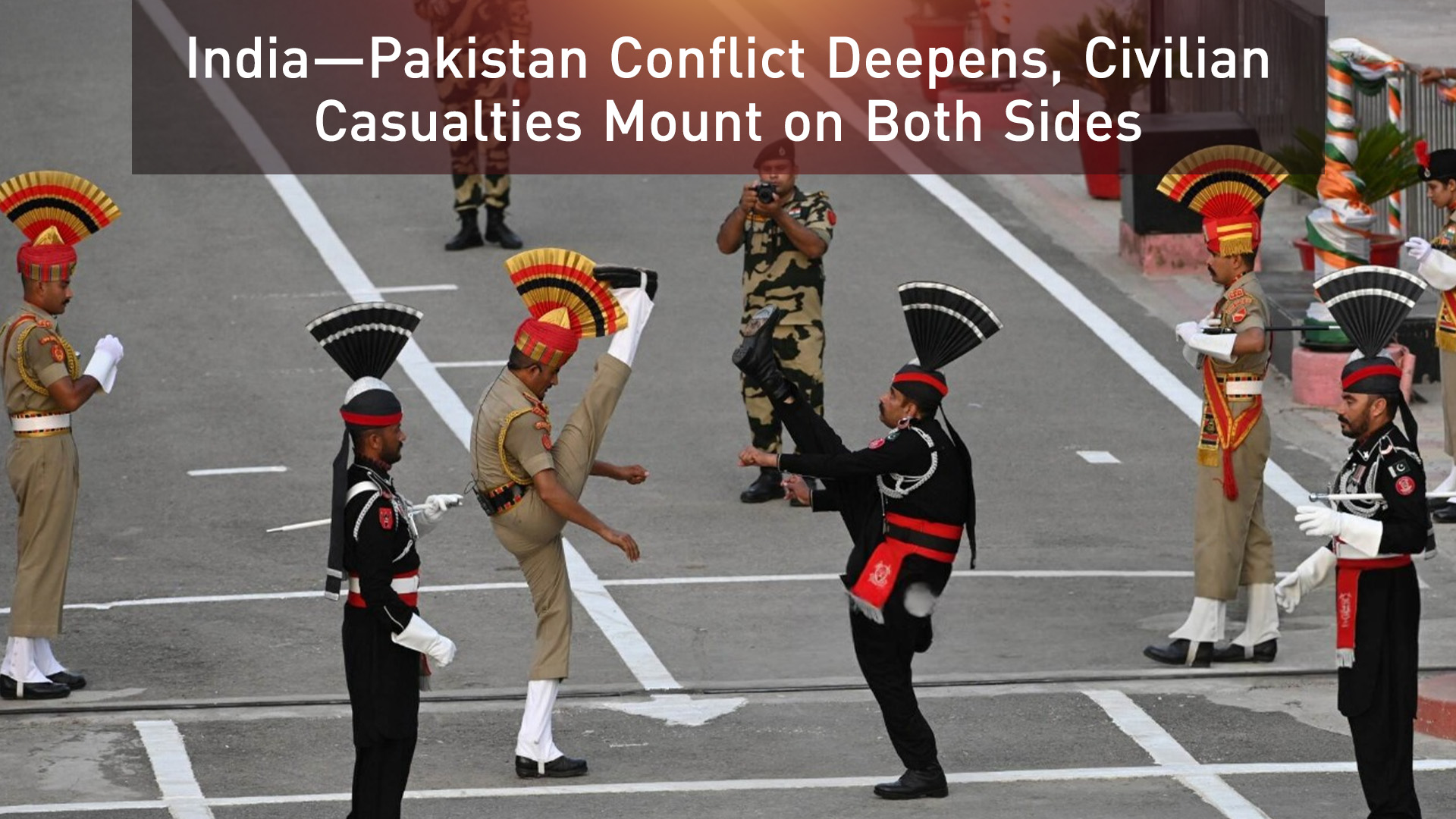India–Pakistan Conflict Deepens, Civilian Casualties Mount on Both Sides
The intensifying cross-border hostilities have prompted urgent diplomatic efforts and nuclear oversight meetings in Islamabad, with global leaders calling for immediate de-escalation.

By Kamaran Aziz
ERBIL (Kurdistan24) — Tensions between nuclear-armed India and Pakistan have escalated into the most dangerous military confrontation in decades, as Pakistan launched missile and drone attacks early Saturday on Indian military sites in retaliation for what it described as unprovoked air strikes by India.
The intensifying cross-border hostilities have prompted urgent diplomatic efforts and nuclear oversight meetings in Islamabad, with global leaders calling for immediate de-escalation.
According to The Washington Post, Pakistan’s armed forces struck Indian military installations, including the BrahMos missile storage facility in Beas and airbases in Pathankot and Udhampur. These retaliatory attacks, named “Operation Bunyan al-Marsus,” were launched after India targeted three key Pakistani airbases—Nur Khan near Islamabad, Murid in Chakwal, and Rafiqui in Shorkot—with air-to-surface missiles earlier in the week.
Lt. Gen. Ahmed Sharif Chaudhry, Pakistan’s military spokesman, accused New Delhi of “pushing the whole region toward dangerous war” and said Pakistan’s response was both firm and targeted. The Indian government, while not issuing an official statement immediately, confirmed the attacks through senior officials and reported casualties and damage to both civilian and military sites.
Omar Abdullah, the Chief Minister of Jammu and Kashmir, confirmed that at least one government official was killed in Rajouri.
The New York Times noted that the confrontation, which began with Indian strikes on what it described as “terrorist infrastructure” following the April 22 massacre of Hindu tourists in Pahalgam, has now evolved into a multi-domain conflict involving drones, missiles, and cyberattacks.
Pakistani military sources claimed their forces destroyed India’s S-400 missile defense system in Adampur and carried out cyber intrusions into Indian defense networks and critical websites, including those of the BJP and Border Security Force.
Meanwhile, Reuters reported that Pakistan’s Prime Minister Shehbaz Sharif convened an emergency meeting of the National Command Authority, the highest civilian-military body overseeing nuclear weapons policy.
The summoning of this body signals a grave escalation, interpreted by analysts such as Asfandyar Mir of the Stimson Center as “a soft nuclear signal” reflective of how high the crisis has climbed on the escalation ladder.
In Washington, U.S. Secretary of State Marco Rubio held a phone call with Pakistan’s Army Chief General Asim Munir, offering American assistance to initiate talks.
The State Department, through spokesperson Tammy Bruce, reiterated that “both parties must find ways to de-escalate and avoid future conflicts.” Yet, as the war rhetoric intensifies, both Islamabad and New Delhi appear determined to press forward.
The Indian Express reported emergency preparedness measures in India’s capital Delhi, where civil defense volunteers have been mobilized for the first time since the 1971 war. Air raid sirens have been installed and tested across the city, emergency shelters identified, and drills initiated to prepare for potential aerial attacks.
The Delhi government announced the procurement of 500 sirens, with 1,800 disaster response volunteers undergoing intensive training.
In Indian-administered Kashmir, residents reported blackouts, artillery fire, and missile strikes. “We’re fed up with running every time the shelling begins,” said a 70-year-old resident of Uri to The New York Times. On the Pakistani side, funeral prayers were held for civilians killed in Bandli village as villagers braced for further attacks.
More than 48 deaths have been reported on both sides since the clashes began on May 7, though figures have not been independently verified.
According to Dawn, Pakistan’s military emphasized that India’s attacks had failed to damage its air assets, though some missiles did bypass air defenses. The DG ISPR claimed Pakistan possesses the electronic signatures of India’s missiles, adding that evidence of their trajectory and intended targets would be shared in due course.
India, for its part, has accused Pakistan of violating its airspace with over 400 drones and targeting civilian infrastructure. While India’s Ministry of Defense has vowed to respond “proportionately,” there has been no formal offer to de-escalate.
Both sides have suspended domestic sports tournaments and redirected military resources to the front lines.
The Group of Seven industrial nations and regional actors like Saudi Arabia and the UAE have urged calm. Yet, as drone warfare and missile strikes continue, the conflict has morphed into a volatile and unpredictable crisis, with civilian populations increasingly caught in the crossfire.
As Delhi prepares for the worst and Islamabad signals its nuclear readiness, the 2025 India-Pakistan conflict has become a flashpoint with global ramifications. Unless decisive diplomatic intervention materializes soon, South Asia may find itself in the grip of a rapidly expanding regional war with devastating consequences.
